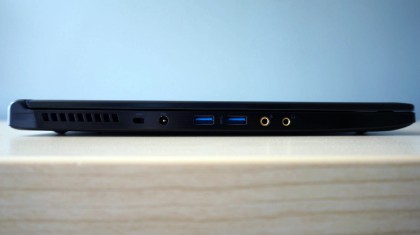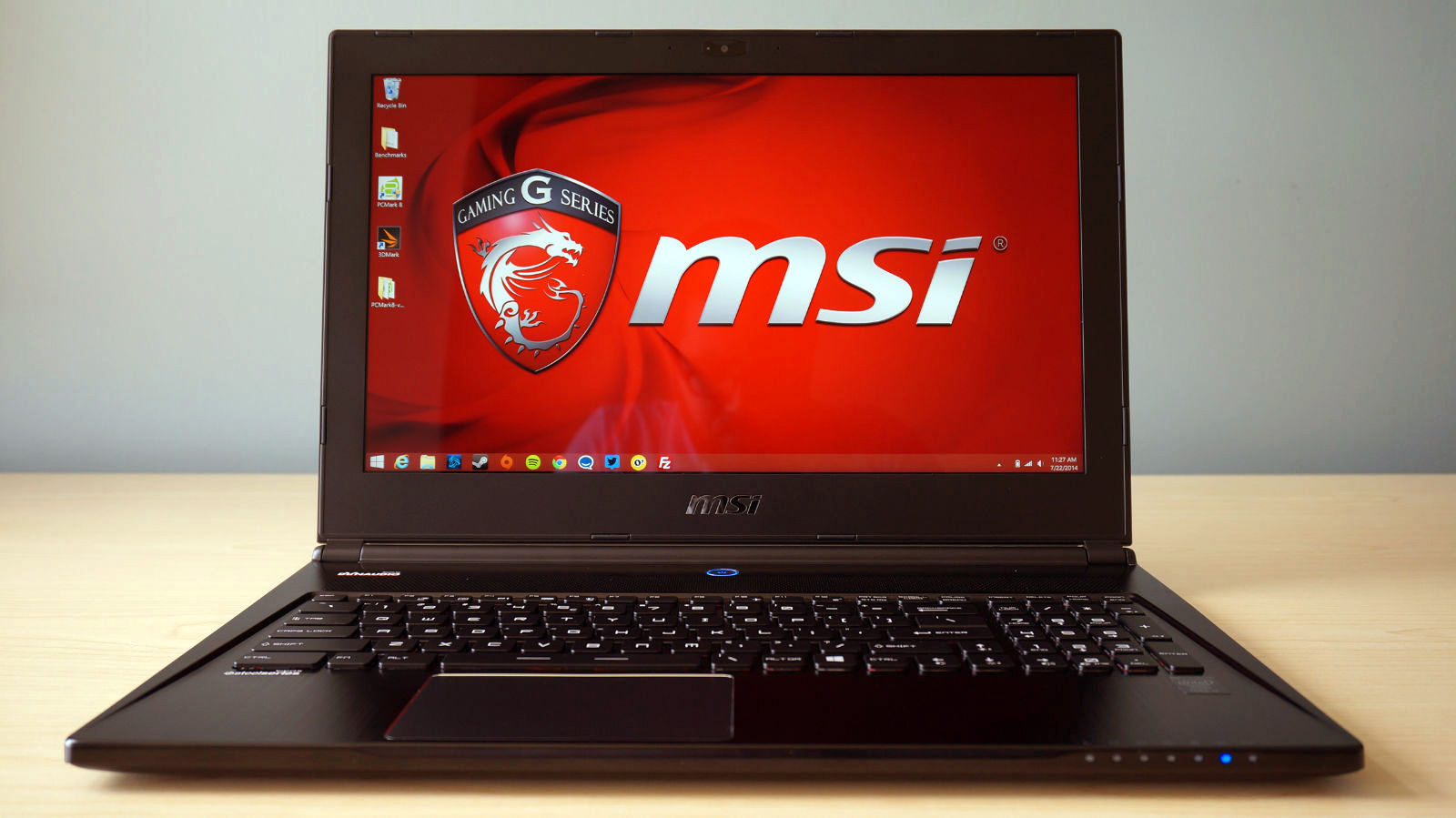Why you can trust TechRadar
Like I've said, it's no joke that not all gaming notebooks need be desktop replacements, and you're not sacrificing much these days in buying a more svelte solution. If you're looking for a thin-and-light gaming laptop, the GS60 Ghost Pro 3K is a fine stop to make along that route judging from dimensions alone.
Measuring 16.5 x 11.3 x 0.85 inches (W x D x H) and weighing just 4.36 pounds, the Ghost Pro 3K might be the thinnest 15-inch gaming rig around. (MSI certainly claims that it's the lightest.) It's slimness is only bested by the latest Razer Blade. While a smaller 14-inch unit, this laptop comes in at an astonishing 13.6 x 9.3 x 0.70 inches and a slightly more dense 4.47 pounds.
For comparison's sake to the average-sized gaming clamshell, the Maingear Pulse 14 fits under a tape measure at 13.31 x 9.5 x 1 inches and sits on the scale at just 3.8 pounds on average. But again, that's a 14-inch model – remember, the Ghost Pro happens to be one of the first of its kind.

Now, on to what MSI managed to cram inside such a slim and stylish suit of armor. Here's how the review unit sent to TechRadar was configured:
Spec sheet
- CPU: 2.5GHz Intel Core i7-4710HQ (quad-core, 6MB cache, up to 3.5GHz with Turbo Boost)
- Graphics: Nvidia GeForce GTX 870M (3GB GDDR5 RAM), Intel HD Graphics 4600
- RAM: 16GB DDR3L (1,600Mhz)
- Screen: 15.6-inch, 2,880 x 1,620 WQHD+ IPS (with MSI Matrix Display support)
- Storage: 128GB SSD, 1TB HDD (7,200 rpm)
- Ports: 3 x USB 3.0, HDMI-out, mini DisplayPort, RJ-45 Ethernet, 3-in-1 card reader, microphone-in and audio-out ports, SPDIF port
- Connectivity: Intel dual-band wireless-AC 7260 (802.11ac Wi-Fi), Bluetooth 4.0
- Camera: 720p webcam
- Weight: 4.36
- Size: 16.5 x 11.3 x 0.85 inches (W x D x H)
Apparently, it takes a lot to get thin. Again, this configuration would cost you a cool $2,099 (about £1,235, AU$2,230). While there are more budget-friendly options starting at $1,699 (around £1,000, AU$1,805), none of them come packing that gorgeous 3K screen. (More on the merits of such a screen later.) If you want even more solid-state storage, MSI offers an option with two 128GB SSDs in RAID-0 configuration for an extra 100 bucks.
When it comes to pricing, both the Razer Blade and Maingear Pulse 14 are in leagues of their own, but represent the spectrum of ultraportable gaming laptops pretty well. The former comes in at the low end for a whopping $2,199 (about £1,294, AU$2,337) with just a single 128GB SSD. That's accompanied by a slightly slower 2.2GHz Intel Core i7-4702HQ chip, a matching GTX 870M GPU and half as much RAM behind an even sharper 14-inch, 3,200 x 1,800 QHD+ touchscreen.

On the other hand, the most expensive Pulse 14 tops out at $1,699 (around £1,000, AU$1,805) with a similar 2.2GHz Intel Core i7-4702QM CPU and a matching 16GB of RAM, but just a GTX 850M graphics chip. That said, Maingear does offer 256GB of solid-state storage in addition to a 1TB mechanical drive.
Sign up for breaking news, reviews, opinion, top tech deals, and more.
It's pretty clear which of these three mobile gaming rigs offers the best value. While the Razer Blade offers unparalleled style and features, it drives the asking price up a wall. Inversely, the Maingear Pulse 14 just doesn't offer enough at its high end for what an entry-level GS60 Ghost costs. (It doesn't even have a backlit keyboard.)
Of course, all of these acronyms and buzzwords are only as good as what they net you. Let's see whether the GS60 Ghost Pro packs the power to back up its panache.

Joe Osborne is the Senior Technology Editor at Insider Inc. His role is to leads the technology coverage team for the Business Insider Shopping team, facilitating expert reviews, comprehensive buying guides, snap deals news and more. Previously, Joe was TechRadar's US computing editor, leading reviews of everything from gaming PCs to internal components and accessories. In his spare time, Joe is a renowned Dungeons and Dragons dungeon master – and arguably the nicest man in tech.
